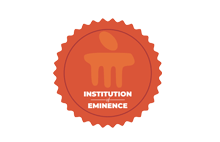The landscape of assisted reproductive technology access in India
Document Type
Article
Publication Title
Reproduction and Fertility
Abstract
Historically, infertility has been stigmatized in Indian society, primarily due to societal norms that equate marriage with procreation. In the twentieth century, India focused primarily on over-fertility in its family planning programs, with little attention given to the complexities of infertility. The introduction of assisted reproductive technology (ART) in the late 1970s marked a global revolution, including in India, offering hope to infertile couples. Despite a significant rise in ART clinics offering a wide range of treatment options in recent years, challenges remain, particularly regarding affordability. In India, ART is typically dominated by the private sector as government support remains limited. Efforts to standardize ART practices, including the establishment of the National ART & Surrogacy Registry and the ART Act aim to regulate, improve outcomes, and curb unethical practices. Despite these advancements, the high cost of treatment cycles and lack of insurance coverage limit couples' ability to undergo fertility treatment. Addressing these issues requires a multifaceted approach, including policy reform, increased public awareness, and the development of affordable treatment options to ensure broader access to reproductive care across India.
DOI
10.1530/RAF-24-0079
Publication Date
10-1-2024
Recommended Citation
Tholeti, Prathima; Uppangala, Shubhashree; Kalthur, Guruprasad; and Adiga, Satish Kumar, "The landscape of assisted reproductive technology access in India" (2024). Open Access archive. 9949.
https://impressions.manipal.edu/open-access-archive/9949


